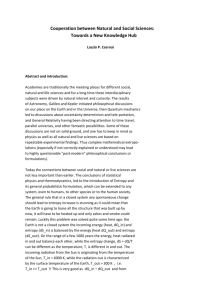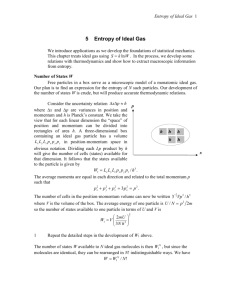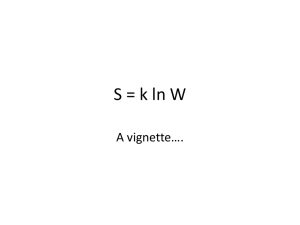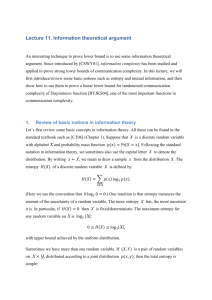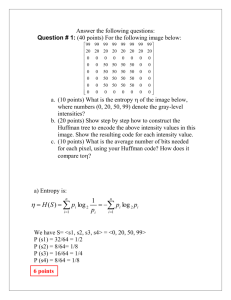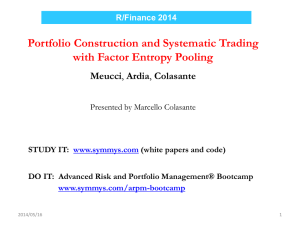SUPPORTING MATERIAL Estimating temporal causal interaction
advertisement
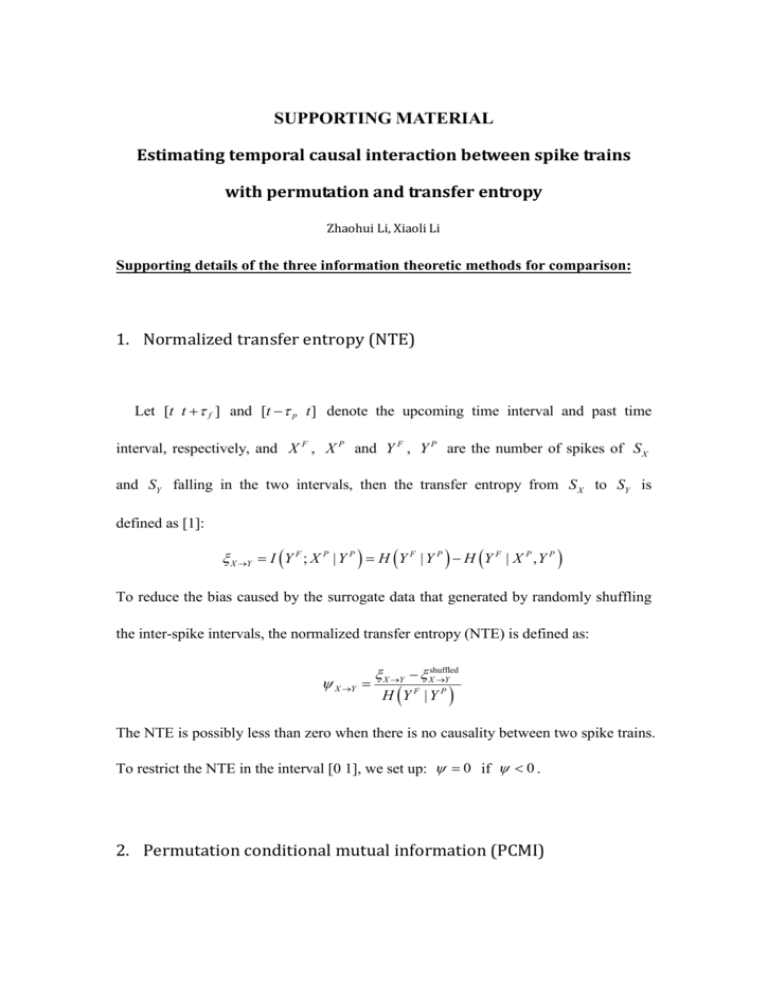
SUPPORTING MATERIAL Estimating temporal causal interaction between spike trains with permutation and transfer entropy Zhaohui Li, Xiaoli Li Supporting details of the three information theoretic methods for comparison: 1. Normalized transfer entropy (NTE) Let [t t f ] and [t p t ] denote the upcoming time interval and past time interval, respectively, and X F , X P and Y F , Y P are the number of spikes of S X and SY falling in the two intervals, then the transfer entropy from S X to SY is defined as [1]: X Y I Y F ; X P | Y P H Y F | Y P H Y F | X P , Y P To reduce the bias caused by the surrogate data that generated by randomly shuffling the inter-spike intervals, the normalized transfer entropy (NTE) is defined as: X Y X Y Xshuffled Y H Y F | Y P The NTE is possibly less than zero when there is no causality between two spike trains. To restrict the NTE in the interval [0 1], we set up: 0 if 0 . 2. Permutation conditional mutual information (PCMI) To calculate the PCMI, two spike trains S X and SY are first converted to discretized sequences by using a fixed bin. Then, let X xˆi and Y yˆi denote the ordinal patterns of these two sequences respectively. Here, we choose the same order as the one used to compute the NPTE, i.e., 3. The processes to obtain X and Y is similar to that in the calculation of NPTE. The marginal probability distribution functions of X and Y are denoted as p x and p y and the joint probability function of X and Y is denoted as p x, y . Then, the entropy of X and Y can be defined as H X p x log p x xX and H Y p y log p y yY The joint entropy H X , Y of X and Y is H X , Y p x, y log p x, y x X yY The conditional entropy H X | Y of X given Y is given by H X | Y p x, y log p x | y x X yY Then, the common information contained in both X and Y can be evaluated by the mutual information: I X ; Y H X H Y H X , Y To infer the causal relationship, the PCMI between X and Y can be calculated by the following equations I X Y I X ; Y | Y H X | Y H Y | Y H X , Y | Y and IY X I Y ; X | X H Y | X H X | X H Y , X | X where X ( Y ) is the future steps ahead of the process X(Y) [2,3]. 3. Symbolic transfer entropy (STE) In the computation of STE, a symbol is defined as the ordinal pattern of m data points, where m is the order used to construct motifs. To keep consistency, we set m 3 in this paper. Given two symbol sequences xˆi and yˆi (we use the same notation as the PCMI, meaning that they are obtained in the same way), the STE can be defined as S X Y p ˆyi , ˆyi ,xˆ i log 2 p ˆyi | ˆyi ,xˆ i p ˆyi | ˆyi where the sum runs over all symbols and denotes a time step [4]. References 1. Gourévitch B, Eggermont J (2007) Evaluating Information Transfer Between Auditory Cortical Neurons. J Neurophysiol 97: 2533-2543. 2. Li Z, Ouyang G, Li D, Li X (2011) Characterization of the causality between spike trains with permutation conditional mutual information. Phys Rev E 84: 021929. 3. Palu M, Komárek V, Hrn í Z, těrbová K (2001) Synchronization as adjustment of information rates: Detection from bivariate time series. Phys Rev E 63: 46211. 4. Staniek M, Lehnertz K (2008) Symbolic transfer entropy. Phys Rev Lett 100: 158101.



